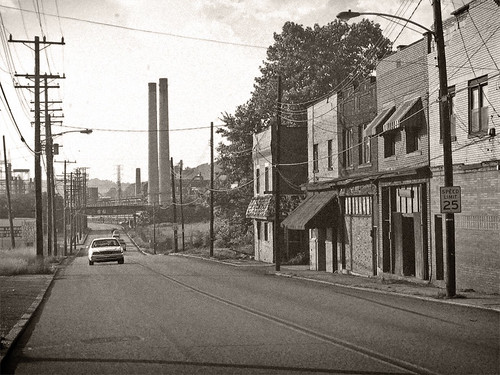As I write I am sitting in a
well-lit heated room located on a Pittsburgh graduate school campus. It’s
frigid outside. There was a snowstorm earlier and tonight the temperature is
supposed to drop to 16 degrees, but the sudden drop in temperature won’t
really. Affect me. Why? Because I have privilege. Privilege, defined as
securing unearned benefits due to membership of a dominant class or group,
breaks down on multiple levels including white privilege, straight privilege,
able-bodied privilege and so on. Once again referring to Patricia Hill Collins’ Matrix of Domination we can begin to see how multi-layered oppression can become. It can be
segmented and analyzed from multiple frameworks, but inevitably most analyses
come to the same point that oppression harms people.
Self-disclosure I am a graduate
student aspiring to become a part of the professional class. My concerns the
concerns of those who live in Clairton are literally worlds apart. Through
employing empathic listening I can hope to accrue knowledge of their problems
and perspectives, but I can never hope to truly understand. I have mentioned
before that I spent my childhood years in the neighborhood of Homewood. Homewood
too has a negative reputation but Homewood, unlike Clairton, is overwhelmingly
racially homogenous. Do not misunderstand me. I am not implying that there are
not racial issues in Homewood, but to use my experiences in Homewood as a frame
of reference for Clairton would be misguided. They are two neighborhoods with
two separate histories.
So I wrestle. I love organization
and forming boards and committees. I love formally drafting reports and
scheduling planning meetings. Until recently I was ambivalent about
functionalist versus grassroots approaches. Now I wonder, could incorporating
professional and corporate style approaches to the non-profit world actually be
silencing the voices of residents? I ask this question rhetorically, because I
know the answer is yes. Once again using the paradigm of intersectional
feminism I am reminded of hegemonic femininity’s rejection of a race and class
based analysis. This corporatization of non-profit movements effectively bars
women who do not have professional backgrounds (class privilege) from
participating in
raising issues and planning actions. So with this knowledge in
mind I step back and ask that the voices of Clairton’s citizens be raised above
those of the local government. I ask that their concerns and needs be addressed
rather than having dictated to them. I argue that when forming a development
committee that the planners seek out the desires of residents. Ask what the
people want. They are experts in their needs. Professional attainments are tools
to be used to uplift rather than further silence those who are already
vulnerable. I see this now and I leave you with this assignment. Whomever you
may be whether you are a social worker, community organizer, or facilities
manager before planning an action look at who is sitting at the table. Whose
literally represented in the room and whose needs and concerns are taking up
the most amount of space in the conversation. Consider this information,
consider it carefully because you mean well, but well intended actions and
words can still cause calamity. For solidarity, listen to Clairton.
 |
| Photo by Richard Rector |



